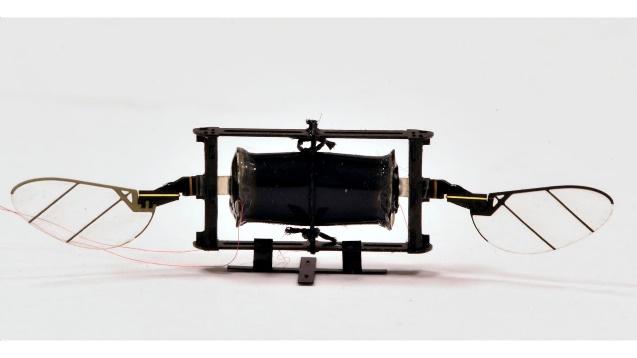MIT Scientists Built Insect-Sized Drones
A Bug’s Eye-View

Just what you needed: another acronym. Meet the MAV: A microaerial-vehicle.
Researchers at the Massachusetts Institute of Technology (MIT) developed and tested a drone; a very, very tiny – you might say bug-sized – drone which, to paraphrase Star Trek, can go “where no man has gone before.”

Overview of MIT’s insect-size drone (Image copyright/courtesy MIT)
The MAV weighs just 665 milligrams (0.00146607 lbs.) and measures 6 x 2 x 1 cm (2.3622 in. x 0.787402 in. x 0.393701 in.). To easily visualize this, 6 cm is about the width of a credit card or business card.
Tiny Drones Inspired by Flying Insects
The scientists, YuFeng Chen, Siyi Xu, Zhijian Ren, and Pakpong Chirarattananon, summarized their work in IEEE TRANSACTIONS ON ROBOTICS, in late 2021.
The microaerial-vehicle project was inspired, almost Da Vinci-like, by nature. The Renaissance man saw birds taking flight and wondered “Why not man, too?” The MIT scientists saw insects and realized how nimble and hearty they are. Think about it. Flying insects navigate their flights through muddled settings. They use their agility to acrobatically zig, zag, flip forward and back, and recover from in-flight collisions to reach their destination and achieve their goals.
How Do MAVs Work?
Most MAVs are powered by rigid actuators, such as piezoelectric ceramics. But, such rigidity brings with it low fracture strength (120 MPa) and failure strain (0.3%). While they may have a high lift-to-weight ratio, they can’t perform somersaults or recover quickly from collisions. The MIT team used a novel dielectric elastomer actuator (DEA). This DEA is capable of high-power density (1.2 kW/kg) and a comparatively high transduction efficiency (37%). The elasticity of a soft actuator facilitates unique flight capabilities, a greater lift-to-weight ratio (>2.2:1), and can ascend at 70 cm/s. When the MAV collides in-flight it can now somersault with 0.16s.
The potential for this new class of hybrid soft-rigid robots portends a future of enhanced environmental explorations in areas that could not be easily reached by many, if not all, of the UAVs currently being developed.


